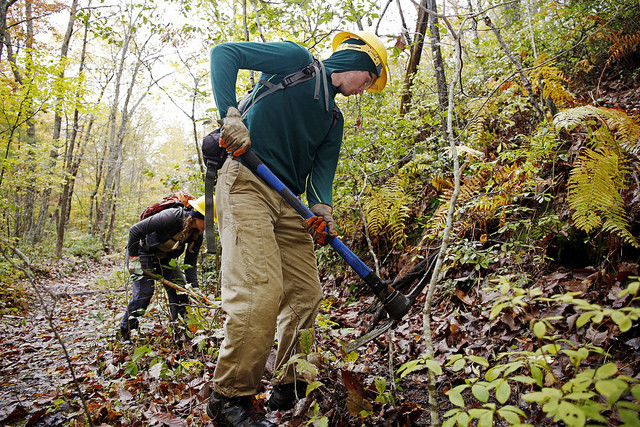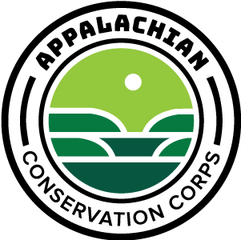Shenandoah or Bust: Blog 1
Blog One of the many amazing views along Skyline Drive.
One of the many amazing views along Skyline Drive.
The GAVCC Fall season is underway and I could not be more excited for these next 2 months. Shenandoah National Park is so incredibly beautiful, and the work we will be doing on the Appalachian Trail connectors will be help to improve the experience for many different types of recreators.
Our first hitch was full of surprises and being flexible was crucial. What was expected to be a very wet and soggy full 9 day hitch turned into only 3 days of work. With the effects of the hurricane anticipated to reach Shenandoah, the park was evacuated and everyone was sent home. Safety is one of the most important factors of the job and is taken seriously at all times. Wearing personal protective gear- hard hat, gloves, and eye protection- is required around tools and our work sites. The hurricane added onto our awareness and risk mitigation strategies. One of the biggest risks we looked out for were dead trees or branches that could fall down with heavy winds or rains, these are commonly referred to as widow-makers. It is important to never set up your tent or camp sites under or around these. You also have to be aware of your work site safety. If there is a dead tree or branch looming above where you’re supposed to work, evaluate the risks. It could make more sense to just skip that site and lower your potential for injury. Taking the time to talk as a group about job site hazards is necessary and should be done at every site.
 Crew Leaders Westen and Caitlin hard at work.
Crew Leaders Westen and Caitlin hard at work.
We were based in the front country and we focused on clearing out water bars and drains and vegetation control. During our training hitch, we were constructing these different trail features. Having the construction knowledge made identifying and fixing the underlying issues much easier. There were a few water bars that we did have to create, which is one of my personal favorites. Making trail features is like solving a puzzle or creating art. You are using different elements and resources of nature to create safe and sustainable trails. For water bars, you need to dig out just the right amount of dirt and find rocks that fit together like a jagged puzzle. It is fun and challenging and works your mind. It will be amazing to reflect back upon this first hitch come the end of the season and see how our crew has grown together and improved.
 Samantha is gathering different sizes and shapes of rocks to help create our water bar. The rocks are used essentially as puzzle pieces and finding ones that fit together can be challenging!
Samantha is gathering different sizes and shapes of rocks to help create our water bar. The rocks are used essentially as puzzle pieces and finding ones that fit together can be challenging!
Trails withstand so much wear and tear from both human impacts and natural processes. They can become worn down, hard to identify, and the terrain can become more challenging. This will often lead people to deviate from the intended trail and create what are known as social trails. We want to follow the principles of Leave No Trace and minimize our footprint, on many segments of trail we fixed the correct trail and disguised the accidental trail.Over time, vegetation silently creeps and grows into the trails, making narrow trails harder to navigate or branches overhead a hazard. Our goal with vegetation work is to improve the trail without sacrificing the wildness of it all.
Thomas is cutting back vegetation to ensure this trail is accessible for visitors.
First hitch down, many more trails to go!!





